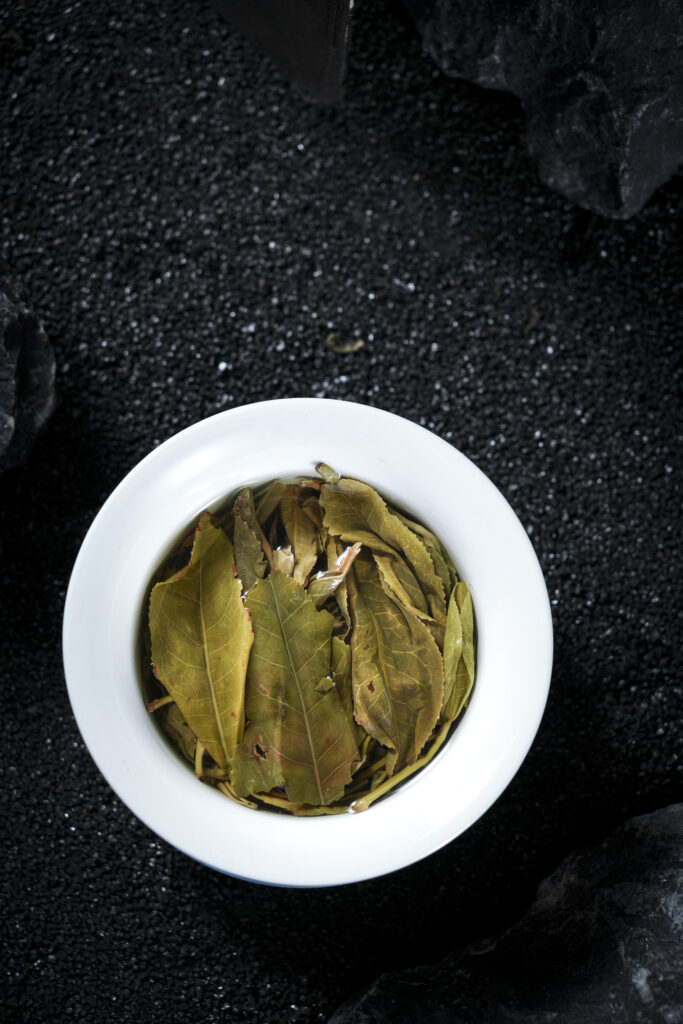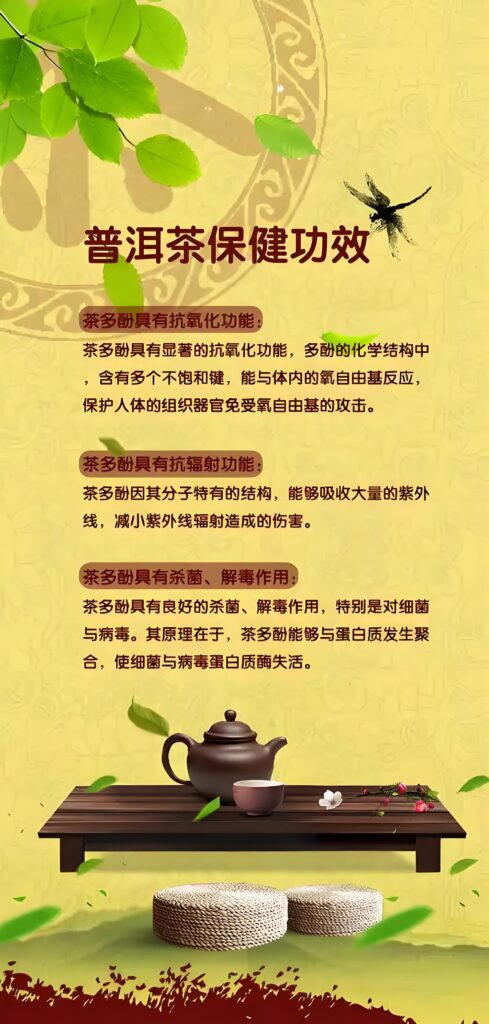Understand Pu-erh Tea Leaf Base in 3 Minutes (With Visual Guide)
Pu-erh tea, a unique treasure from Yunnan, China, is famous for its mellow flavor, aging value, and rich cultural background. But did you know that the tea leaf base after brewing can tell you a lot about its quality? In this article, we’ll teach you how to evaluate Pu-erh tea by observing its leaf base — all in just three minutes.

1. What Is the Leaf Base and Why Does It Matter?
The leaf base refers to the tea leaves after brewing, which expand and reveal their true state. It is a key indicator of a tea’s raw material quality, production process, and storage conditions.
2. Three Steps to Understand the Leaf Base
1. Color Indicates Quality
- Raw Pu-erh (Sheng Cha): The leaf base is usually yellow-green or olive green. It turns darker with age (brownish or dark yellow).
- Ripe Pu-erh (Shou Cha): The leaf base is reddish-brown or dark brown, ideally with an oily and glossy appearance.
✅ A shiny, natural color suggests proper fermentation and storage.
❌ A dull, dark, or burnt-looking leaf base may indicate poor-quality processing or improper storage.

2. Softness Reflects Freshness
Gently pinch the leaf:
- If it’s soft and elastic, it’s likely made from tender leaves and processed well.
- If it’s hard, brittle, or breaks easily, the raw material might be older or poorly processed.
3. Integrity Shows Craftsmanship
High-quality Pu-erh tea has a neat, complete, and intact leaf base with minimal broken pieces.
Too many fragments usually mean lower-grade raw materials or rough handling during compression.
3. The Secrets Behind the Leaf Base: Growth & Processing
🌿 Premium Raw Material: Ancient High-Mountain Trees
Pu-erh tea is grown in Yunnan’s mountainous regions such as Xishuangbanna, Lincang, and Pu’er. These areas have year-round mist, rich soil, and great biodiversity — perfect for tea trees.
Ancient tea trees provide thick, flavorful leaves, resulting in fuller flavor and a rich, tender leaf base after brewing.
🛠 Traditional Processing: Sun-Drying & Fermentation
- Raw Pu-erh uses a sun-dried method, preserving natural enzymes for aging.
- Ripe Pu-erh undergoes “wet piling” fermentation (wo dui), which speeds up aging, producing a deep red liquor and soft, glossy leaf base.

4. One-Minute Quick Guide
| Feature | Raw Pu-erh (Sheng Cha) | Ripe Pu-erh (Shou Cha) |
|---|---|---|
| Color | Yellow-green, olive, shiny | Reddish-brown, oily, uniform |
| Texture | Soft, elastic, springy | Supple, not sticky, not dry |
| Integrity | Complete, evenly stretched | Defined leaves, low debris |
FAQ
Q1: What is the main difference between raw and ripe Pu-erh leaf bases?
A1: Raw Pu-erh leaves are greenish, while ripe Pu-erh leaves are reddish-brown. Raw tea feels more active; ripe tea is smoother and glossier.
Q2: Does a dark leaf base always mean aged tea?
A2: Not necessarily. A dull, lifeless leaf base might be due to improper fermentation or poor storage, not age.
Q3: Is it okay if the leaf base has many broken pieces?
A3: It’s drinkable, but not ideal. Too many fragments usually lead to bitterness and lower-quality flavor.
Conclusion
The beauty of Pu-erh tea lies not only in its taste but also in its leaf base, which holds hidden clues to its quality. By paying attention to the color, texture, and integrity of the leaf base, you can quickly judge whether a Pu-erh tea is truly worth your time.
👉 Want to explore more about Pu-erh tea? Contact us today:
https://longyuanfamily.com/contact-us/

